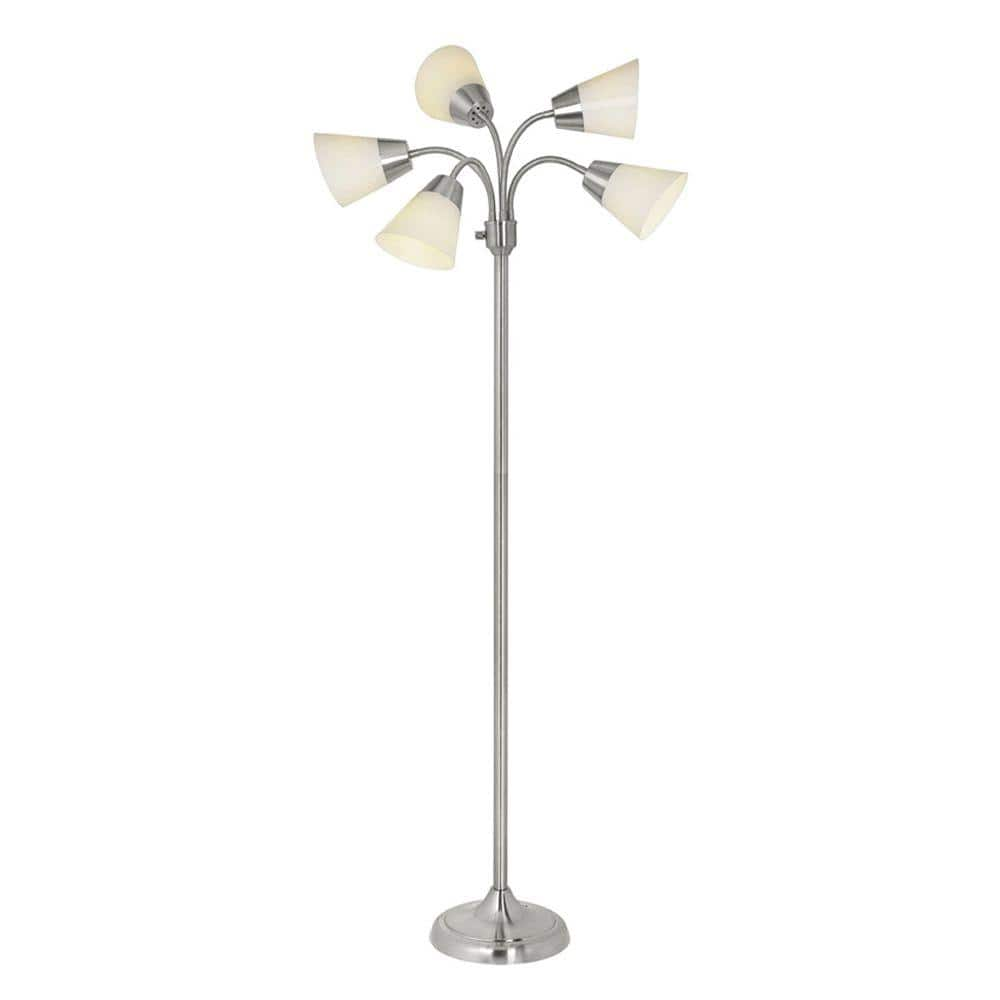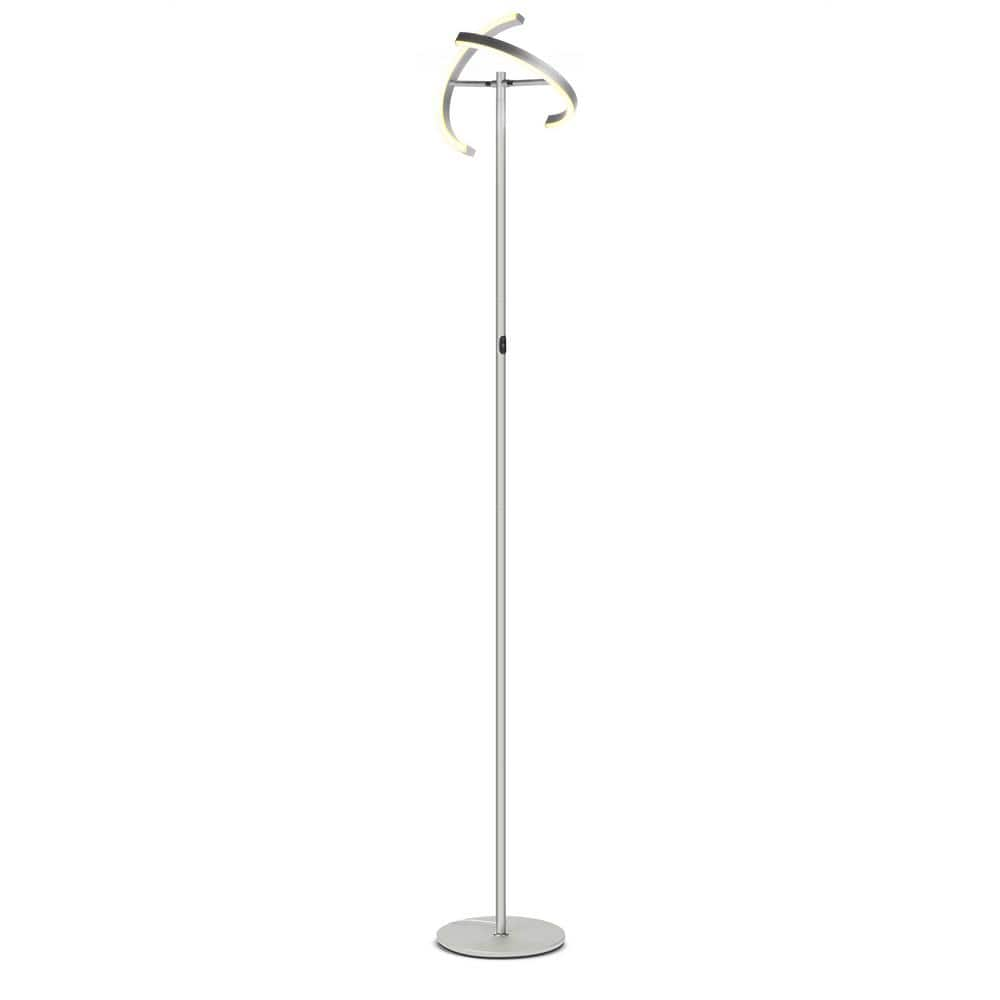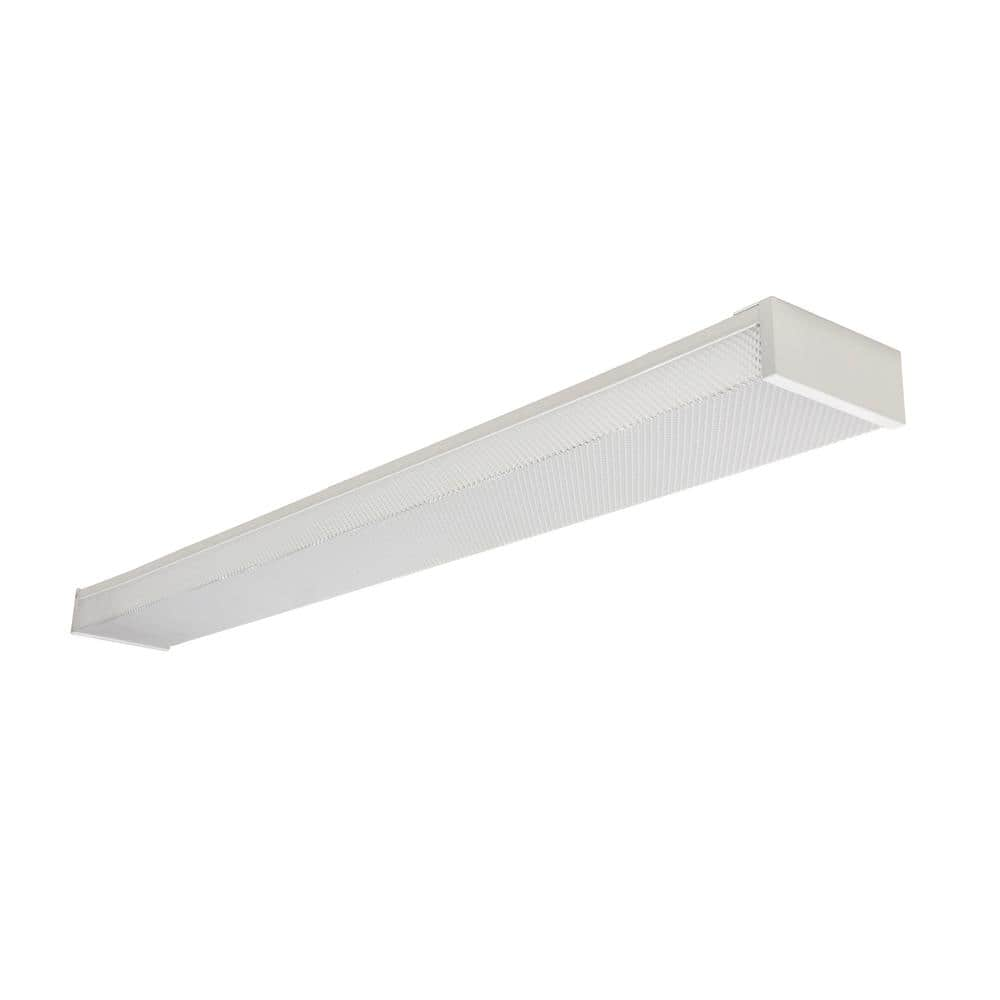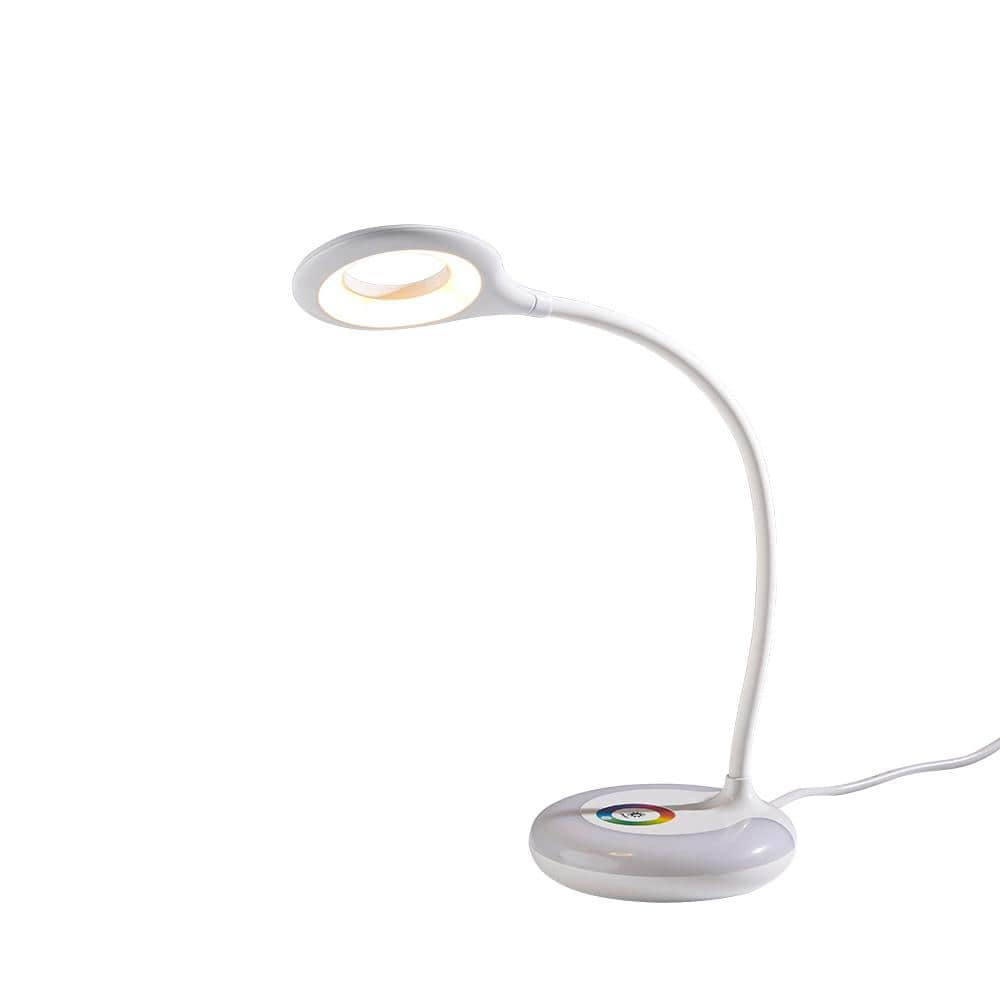Hampton Bay 66 in. Satin Nickel Floor Lamp with 5 Plastic Bell Shades
Five adjustable gooseneck arms with frosted shades. Uses 5-bulbs up to 60-Watt, sold separately. Modern style floor lamp fits any room decor.
The Hampton Bay 66 in. Floor Lamp is durably built from metal. It features flexible arms and a 4-way switch for adjustable direction and light output. It uses (5) 60-Watt bulbs (not included).
- Lamp has a stable metal base
- Frosted plastic bell-shaped shades
- Lamp has a durable metal construction
- Lamp has an adjustable gooseneck arms for custom light direction
- 4-way rotary switch allows for adjustable light output
- Uses 5-bulbs up to 60-Watt (not included)
- Lamp has a flexible arms for direct lighting
Additional information
| Dimensions | H 66 in, W 30 in, D 30 in |
|---|---|
| Manufacturer Warranty | Will replace defective parts |






by Resa
Meets my needs in a room that needs lighting, but eventually bottom stand will begin to rust. I had the same thing before it was blown down by horrific winds coming through the partially closed jalousies!!! The stand had rusted. It is probably does that more so because of where I live, approximately 5 miles above the seashore.
by Susan
needed a lamp to cover a dark corner of my living room. this lamp is great because it has 3 choices of which bulbs to light!